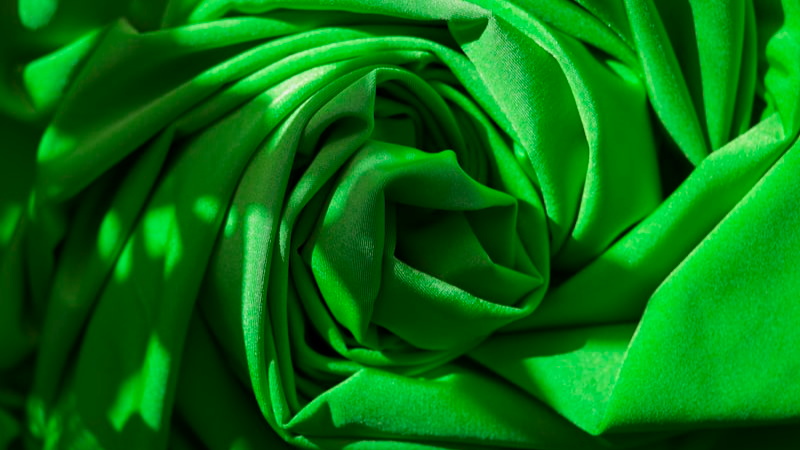 In an era where innovation reigns supreme, MAS Holdings has set a new standard with its groundbreaking Fluid Channeling Fabric, developed by Twinery. This revolutionary material, designed to efficiently manage moisture, marks a pivotal shift in textile engineering. By seamlessly integrating hydrophobic and hydrophilic yarns, the fabric not only wicks away sweat but also ensures rapid drying, offering a game-changing solution for various industries. From performance apparel to intimate wear and healthcare applications, the adaptability and functionality of this fabric are unparalleled. Join us as we delve into the intricate details of this cutting-edge technology and explore its diverse range of applications in the global market.
In an era where innovation reigns supreme, MAS Holdings has set a new standard with its groundbreaking Fluid Channeling Fabric, developed by Twinery. This revolutionary material, designed to efficiently manage moisture, marks a pivotal shift in textile engineering. By seamlessly integrating hydrophobic and hydrophilic yarns, the fabric not only wicks away sweat but also ensures rapid drying, offering a game-changing solution for various industries. From performance apparel to intimate wear and healthcare applications, the adaptability and functionality of this fabric are unparalleled. Join us as we delve into the intricate details of this cutting-edge technology and explore its diverse range of applications in the global market.
Revolutionizing Moisture Management
The groundbreaking Fluid Channeling Fabric developed by Twinery, a dedicated innovation arm of MAS Holdings, represents a significant leap forward in textile engineering. By ingeniously combining hydrophobic and hydrophilic yarns, this fabric offers unparalleled moisture management capabilities. Unlike traditional materials that rely on topcoat treatments or layered solutions, the Fluid Channeling Fabric is woven directly into the material, ensuring long-lasting performance. This innovative approach not only effectively channels moisture away from the skin but also facilitates rapid drying, making it ideal for a wide range of applications across various industries.
The versatility of the Fluid Channeling Fabric extends to performance apparel, intimate wear, healthcare, and beyond. For performance apparel, such as hiking gear and military uniforms, the fabric's ability to keep the wearer dry and comfortable is a game-changer. In the healthcare sector, applications like post-surgical garments benefit from the fabric's moisture-wicking properties, enhancing patient comfort and recovery. Moreover, the customizable nature of the fabric allows for tailored solutions in diverse settings, from nursing bras to firefighter base layers. This adaptability underscores the fabric's potential to revolutionize moisture management across multiple sectors, emphasizing its strategic importance for companies seeking innovative and sustainable textile solutions.
Customizable Functionality and Design
One of the key features of the Fluid Channeling Fabric is its customizable functionality and design, offering companies a unique opportunity to tailor products to specific needs and preferences. Twinery's emphasis on color versatility highlights the fabric's adaptability to different branding requirements and consumer preferences. By utilizing a yarn-based solution that is not limited to traditional white colors, companies can explore a wide array of design possibilities to differentiate their products in the market. This customization extends beyond aesthetics to encompass the fabric's dual-sided applications, with each side serving a distinct purpose in moisture management, further enhancing its strategic value for companies looking to stand out in competitive markets.
The ability to customize the fabric's look and function opens up new avenues for innovation and differentiation in product development. Companies can leverage this feature to create unique offerings that cater to specific customer needs, whether in terms of performance, comfort, or style. The fabric's dual applications, with one side repelling water and the other absorbing it, provide a versatile platform for designing products that address a range of moisture-related challenges. This level of customization not only enhances the user experience but also positions companies at the forefront of sustainable and customer-centric textile solutions, driving long-term value and competitiveness in the market.
Sustainable and Ethical Applications
In an era where sustainability and ethical sourcing are paramount, the Fluid Channeling Fabric offers companies a compelling solution to align with ESG goals and promote transparency in their supply chains. MAS Holdings' commitment to sustainability is reflected in the fabric's innovative design, which minimizes waste and maximizes efficiency in moisture management. By integrating eco-friendly materials and production processes, companies can reduce their environmental footprint while delivering high-performance products that meet evolving consumer demands for sustainability.
The ethical implications of the fabric's applications extend to diverse industries, from performance apparel to healthcare, where responsible sourcing and production practices are increasingly valued. The use of sustainable materials and manufacturing techniques not only enhances the fabric's performance but also resonates with conscious consumers seeking products that prioritize environmental and social responsibility. By incorporating the Fluid Channeling Fabric into their product offerings, companies can demonstrate a commitment to sustainability and ethical sourcing, fostering trust and loyalty among environmentally conscious consumers while driving positive social impact across global supply chains.
Conclusion
In a landscape driven by innovation and sustainability, MAS Holdings' Fluid Channeling Fabric, developed by Twinery, stands out as a game-changer in moisture management. This revolutionary material not only redefines textile engineering but also offers customizable functionality and design, catering to diverse industry needs. With a strong focus on sustainability and ethical applications, this fabric aligns with ESG goals, promoting transparency and responsible practices across global supply chains. As companies strive for differentiation and value creation, embracing this cutting-edge technology presents a strategic opportunity to lead in innovation, meet consumer demands, and drive positive social impact. Embrace the future of textiles with the Fluid Channeling Fabric, where performance meets sustainability in a seamless blend of functionality and purpose.